Information About Fleece
INFORMATION ON FLEECE; DEFINITIONS PERTAINING TO FIBER
Information provided courtesy of Sharon Chestnutt-- CAGR Founder,
CAGBA Registrar, breed and fiber judge, and breeder of CAGBA and
AAGBA Angora Goats
The elements of a great mohair fleece are great luster, great handle, great character and style, and good length. Mohair is supposed to shine. The handle of a fleece is how it feels, generally how soft or silky it is. The style and character are the wave and twist and lock formation of the fleece, and how pretty it is.
In crosses of Pygmies or dairy goats and probably Nigerians, there is a range of resulting fleece types after several generations of breeding. Some produce fleeces that are very like mohair and all the quality descriptions of mohair apply. At the other send of the spectrum are cashmere type fleeces. Most smooth coated goats produce an undercoat that is short cashmere. Crossing with the angora can result in a goat that produces a "C" type cashmere fleece. Cashmere is defined as a goat fiber, less than 18 microns in diameter with a non lusterous, crinkly style and character. There should be a great deal of difference between the fine undercoat and the coarse outercoat in the fleece to allow separation. The third or "B" type fiber is somewhere in between cashmere and mohair [cashgora]. It may have some luster, is intermediate in length and fineness and there should be good separation beteen the fiber and any kemp or medualted fibers.
Fiber diameter - The most important price determining factor of fleece is the fiber diameter. [Angora] Kid fleeces command the highest prices because they are so fine and soft, however some of the first kid clip is lacking in luster and in lock definition. The fiber diameter increases as the animals get older and males tend to coarsen faster than females. The coarsest part of the fleece is the neck. Uniformity of fiber diameter and lock type over the whole body is important.
Staple length - an angora goat ideally will grow a 6 inch fiber in 6 months. The staple will not necessarily be 6 inches in a fleece with lots of character. Both mills and handspinners can appreciate this length. Fleeces longer than 7” fill a specialty market and those shorter than 4’’ are not useable. B fleece types are typically 4-6 inches long and C types are 2-4 inches. [shorter type C fiber can be used in felting]
Style and character - Style refers to the twist in the staple while character refers to the wave or crimp. A balance between style and character is desirable [in Angoras. This also goes for Type “A” Nigoras.] Too little style and character lead to straight, or open, or fluffy mohair, which is undesirable. Too much character with too little style leads to flat, wavy staples, which in extreme cases, is known as sheepy fleece. Too much style can lead to tight ringlets, which are hard to process. Uniformity of lock type and well- defined locks are desireable. In B and C type Pygora and Nigora fleeces the style is generally seen only in the curl at the tip of the fleece. Neither of these fleece types forms well defined locks. [These are to be lofty, fluffy fibers; cloud like compared to typical Angora mohair or Type “A” Nigora fleece]
Luster - Mohair should shine. Very fine first kid fleeces, B and C type Pygora and Nigora, and very fine downy fleeces, do not have the luster usually associated with mohair [Type “B” may show some luster]. Fleeces that have no protective oils can be overexposed to the weather, and loose their shine. Lice take the luster out of a fleece.
Handle - Mohair should feel silky and the younger fleeces feel soft, as these are qualities handspinners prize. Adult fleeces will not be soft but they should not be “hairy”. The handle will vary with the "type" of fleece. A types will have a cool, silky mohair type feel. B and C types will be warmer and downier. [Suede like]
Yield - Yield is important to the handspinner primarily in terms of ease of washing. Very greasy or dirty fleeces are hard to wash and lose quite a bit of weight in the washing. A light coating of oil however keeps the fleece shiney and protects it from the weather. Pygora and Nigora fleeces are rarely greasy types.
Freedom from kemp - Kemp is a coarse guard hair like fiber. Kemp fibers tend to stick out of spun yarns and because they are coarse they are also scratchy. White kemp does not take dye well and colored kemp tends to be more heavily pigmented than the true fiber. Because they are over 60% hollow, kemp fibers tend to be more opaque than mohair. First kid fleeces may retain some shed kemp fibers as the birth coat of an angora is about 50% kemp. By three months of age the mohair fibers grow in and the kemp falls out, the fleece is about 92% mohair. The biggest problems in fleeces of angora crosses is the pressence of kemp and other medulated fibers. Medulated fibers are those with a hollow core. B and C type fleeces typically need dehairing to remove these fibers although I have seen a few goats where the kemp has been virtually bred out.
Cleanliness - Handspinners are greatly concerned with the ease with which they may process and spin a fleece and so cleanliness is of primary importance.
Once your fleece is off the goat, it no longer matters what age or sex the goat was that grew it. What matters now is how fine is it and therefore what grade it is, and style, character, and handle are our best indicators here. How uniform and clean and lustrous is the fleece? Length and uniformity of length, and yield and weight of the fleece are also judging considerations. Kemp downgrades any fleece.
**[Commentary within brackets added by ANGBA ]
This page was last updated: September 3, 2013
Pics of Goats With Different Fleece Types
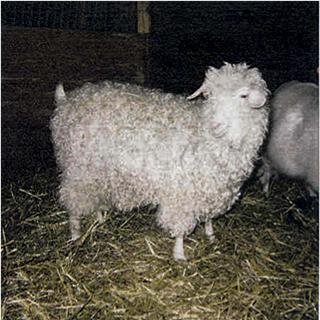
<< Skyview Jolene- "Heavy Nigora" doe with white Type "A" fleece
Skyview Shadow- Black and white colored Nigora doe (Bolero/Buckskin pattern) with Type "A" fleece >>
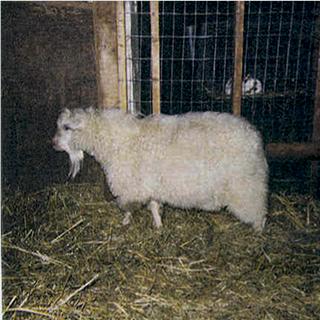
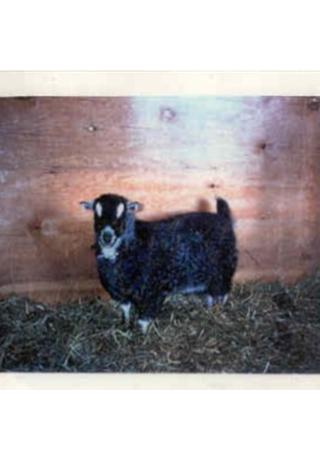
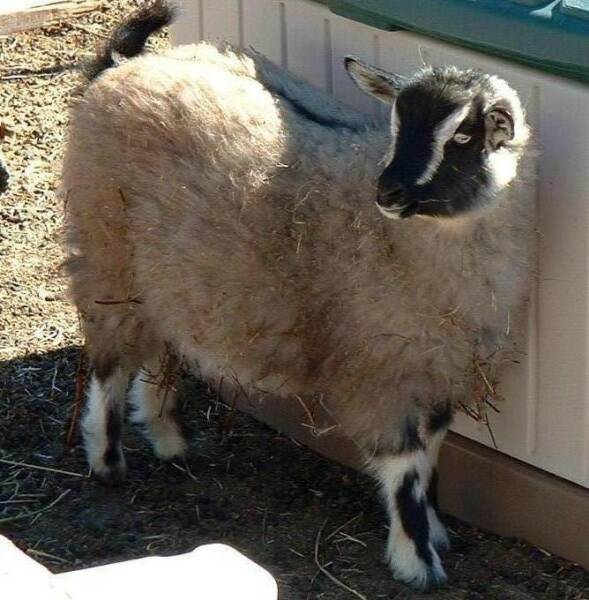
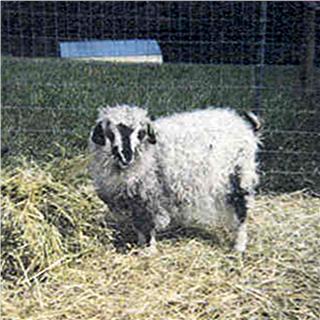
<< Kao Eki Zachary- F1 PBA Pygora buck with white
Type "B" fleece
<< Farmhouse Acres Bette- F1 Nigora doe, black swiss marked with medium grey
Type "B/C" appearing fleece
Skyview Cocoa Puff- Nigora doe, black swiss marked with black Type "B" fleece >>
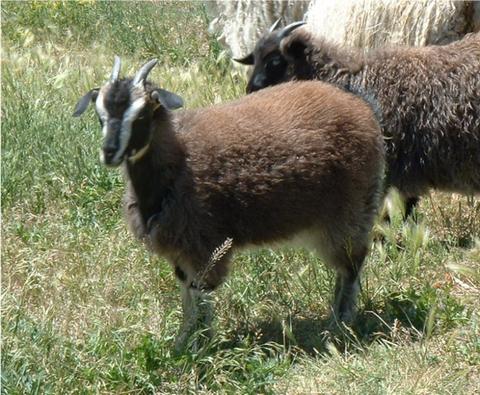
Farmhouse Acres Kit- Nigora doe, black swiss marked with light black/brown
Type "C" appearing fleece (shedding at the neck) >>
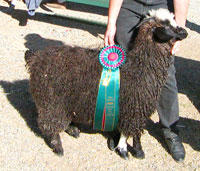
Heavensent Clara- CAGBA Colored Angora doe, black and white pinto with black mohair >>
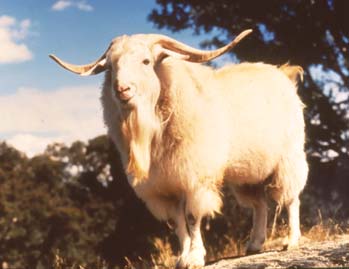
<< Cashgora Buck- white with white cashmere (possibly Type "B/C") appearing fleece
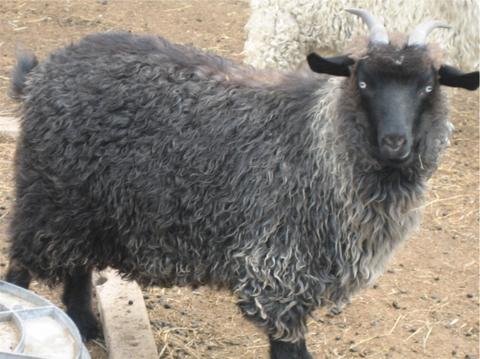
<< Farmhouse Acres Kat- Nigora doe, black with black and grey
Type "A/B" appearing fleece
 | ||||
LOOKING FOR PICS!
If you have good pictures of your Nigoras, CAGBA and AAGBA Angoras, Pygoras, Cashgoras, and/or Cashmere goats in full fleece we'd love to showcase them here. Please email us for more information. Thanks!
Please contact ANGBA for permission to use any Assoc. content found on this site. Thank you!